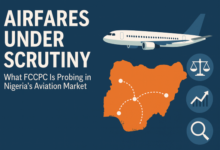Meta Roars into 2025: $42.31 Billion Q1 Revenue Signals AI-Powered Growth Surge Despite Regulatory Headwinds

In a statement of formidable digital dominance and strategic evolution, Meta Platforms Inc.—parent company of Facebook, Instagram, and WhatsApp—has kicked off 2025 with a commanding 16% year-on-year revenue jump in Q1, raking in $42.31 billion.
The Silicon Valley juggernaut, under the leadership of Mark Zuckerberg, is showing no signs of slowing, even as it faces mounting regulatory pressure in Europe and intensifies capital expenditure in artificial intelligence and infrastructure. On a constant currency basis, revenue growth was even stronger—a notable 19%—underscoring Meta’s operational resilience in a volatile global economy.
THE DIGITAL ENGINE: USERS, ADS, AND AI IN SYNC
Meta’s performance wasn’t merely financial—it was deeply engagement-led. Its “Family of Apps” (comprising Facebook, Messenger, WhatsApp, and Instagram) reached 3.43 billion daily active users in March 2025, a 6% increase from the same period last year.
In a digital advertising environment under pressure from privacy regulations and economic tightening, Meta delivered a 5% rise in ad impressions and—more critically—a 10% increase in average ad price. This pricing power reflects Meta’s improving ad targeting efficiency, likely turbocharged by its growing AI integration across platforms.
“We’ve had a strong start to an important year… Our community continues to grow and our business is performing very well,” Zuckerberg said. “We are making good progress on AI glasses and Meta AI, which now has almost one billion monthly actives.”
Meta’s continued investment in generative AI and augmented reality positions it as a long-term leader in next-gen digital interfaces, with monetisation potential stretching far beyond traditional advertising.
SPENDING SMART, BUILDING BOLD
Despite its revenue surge, Meta kept spending in check. Q1 costs and expenses rose just 9% year-over-year to $24.76 billion, showcasing a disciplined approach to operating leverage.
But it’s in capital expenditures where Meta is going full throttle: it spent $13.69 billion in Q1 alone, as it doubles down on data centers, AI infrastructure, and future hardware. The company has now revised full-year 2025 capex guidance up to as high as $72 billion, citing increased investments in AI-driven data capabilities and hardware costs.
Cash remains king for Meta:
- $70.23 billion in liquid assets on hand
- $24.03 billion in operating cash flow
- $10.33 billion in free cash flow
- $13.40 billion in Q1 share buybacks
This is a business not just growing—it is compounding at scale, rewarding investors along the way.
TURBULENCE AHEAD: DMA, EU REGULATORS, AND THE COST OF COMPLIANCE
Yet, even with sky-high metrics, Meta is entering regulatory crosswinds. The European Commission recently declared its “no-ads subscription model” non-compliant with the Digital Markets Act (DMA), warning that it could undermine fair user choice.
Meta has vowed to appeal the decision but may be forced to alter the model mid-year, potentially impacting user experience and ad revenue in the EU market by Q3 2025. This marks a significant inflection point: one where regulatory adaptation becomes just as important as product innovation.
“We anticipate that required changes may affect our European operations before or during the appeal process,” the company noted in its filing.
With rising scrutiny from both Brussels and Washington, Meta’s global regulatory exposure remains a persistent overhang, particularly as the data privacy and digital monopoly discourse intensifies globally.
META’S 2025 OUTLOOK: BIGGER, BOLDER, BUT UNDER THE MICROSCOPE
Looking ahead, Meta forecasts Q2 2025 revenues of $42.5 to $45.5 billion, with a modest 1% FX tailwind. More telling, however, is its decision to revise full-year expense guidance downward to $113–$118 billion, signalling expected efficiency gains even amid aggressive reinvestment.
Meta’s workforce stood at 76,834 as of March 31, 2025—up 11% YoY, as the firm continues to acquire AI and AR/VR talent at scale.
CFO Susan Li confirmed a shift in focus: “Our increased capital expenditure forecast reflects accelerated investments in data centers and infrastructure to support Meta’s growing AI efforts.”
Meta also projects a 2025 tax rate of 12–15%, suggesting continued optimisation of its global tax footprint despite growing political calls for tighter tech taxation frameworks.
BRANDECONOMY TAKE: THE BIGGER PICTURE
Meta is no longer just a social media company—it is becoming a foundational infrastructure provider for the future of human-computer interaction. Its multi-billion-dollar AI push, paired with resilient ad economics and user scale, gives it unmatched advantage—if it can weather the regulatory and geopolitical storms.
As 2025 unfolds, Meta is set to define the battleground on several fronts:
- 🧠 AI utility vs AI hype
- 💰 Ad revenue vs subscription trade-offs
- 🌍 Platform dominance vs global compliance
Zuckerberg’s bet is clear: win on AI, scale globally, and adapt fast. For now, the markets—and the math—are on his side.










